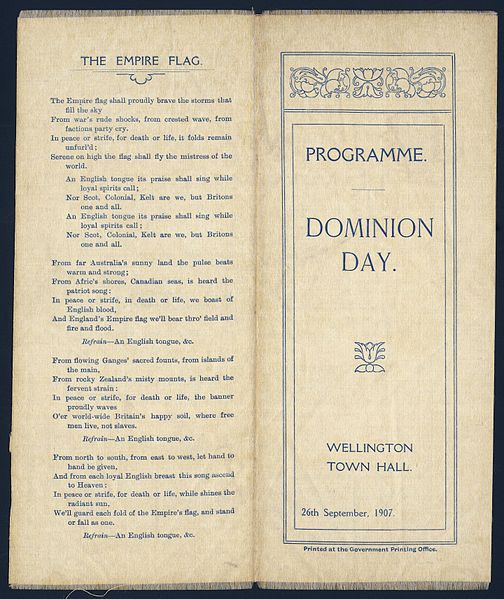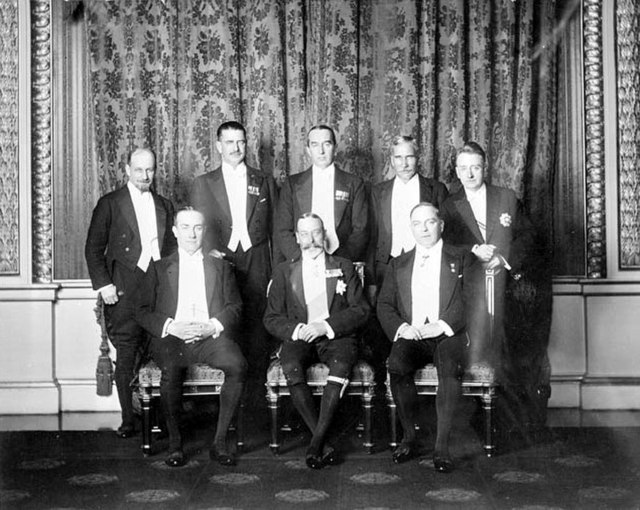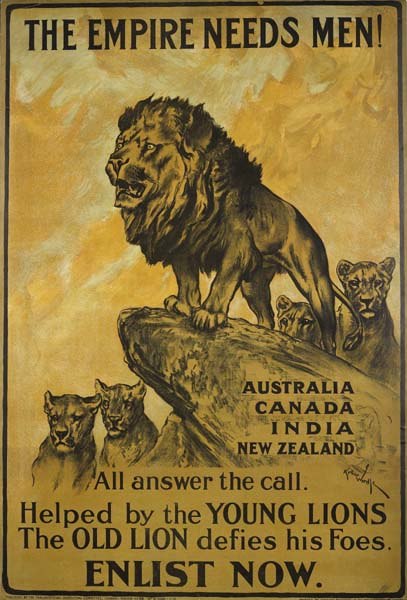Dominion Day was a day commemorating the granting of certain countries Dominion status — that is, "autonomous Communities within the British Empire, equal in status, in no way subordinate one to another in any aspect of their domestic or external affairs, though united by a common allegiance to the Crown, and freely associated as members of the British Commonwealth of Nations". It was an official public holiday in Canada from 1879 to 1982, where it was celebrated on 1 July; that date is now known as Canada Day. In the Dominion of New Zealand, the anniversary of the granting of Dominion status, on 26 September, was observed as Dominion Day; it was never a public holiday.
Crowds on Parliament Hill, Ottawa celebrate Dominion Day, 1927, the 60th jubilee of Canadian confederation
Programme for the Dominion Day service at Wellington Town Hall
A dominion was any of several largely self-governing countries of the British Empire. Progressing from colonies, their degrees of colonial self-governance increased unevenly over the late 19th century through the 1930s, and some vestiges of empire lasted in some areas into the late 20th century. With the evolution of the British Empire into the Commonwealth of Nations, finalised in 1949, the dominions became independent states, either as Commonwealth republics or Commonwealth realms.
King George V (front, centre) and his Prime Ministers at the 1926 Imperial Conference.
The Parliamentary Recruiting Committee produced this First World War poster. Designed by Arthur Wardle, the poster urges men from the Dominions of the British Empire to enlist in the war effort.
Dominion of Canada Postage Stamp, 1898
The prime ministers of Britain and the four major Dominions at the 1944 Commonwealth Prime Ministers' Conference. Left to right: William Lyon Mackenzie King (Canada); Jan Smuts (South Africa); Winston Churchill (UK); Peter Fraser (New Zealand); John Curtin (Australia)






